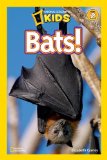Our post this weekend is inspired by a new book, Inside the Human Body by Dr. Aron M. Bruhn, M.D., with illustrations by Joel Ito and Kathleen Kemly. 
Starting with the parts of the cell, the first two pages look like any other nonfiction book.The surprise comes when the pages fold out to a 35-inch long illustration of a human boy with many different organs labeled. The illustration is detailed and tastefully done, so that the boy looks healthy and lively. There are nine other fold out sections throughout the book.
On the following pages come the skin, nervous system, senses, and digestive system. Traveling through the excretory system, muscles, and respiratory system, Dr. Bruhn then explains bones, the immune system, hormones and ends with the reproductive system. Some of you may be wondering about the reproductive system part. It shows external drawings of a fairly realistic male and a female form overlaid with an illustration of the internal organs. The fold out for this section shows the stages of development of a fetus in the womb during pregnancy.
Inside the Human Body poses and answers some interesting questions, such as “How old is your skin?” and “Why do my veins look blue if my blood is red?” I admit, I didn’t know the answer to the first one, which is that the skin replaces itself in just over one month. You can also find out what causes a sore throat, and how to find your blind spot.
If you are doing a human biology unit with middle grade students, or have a child who is learning more about his or her own body, then this is definitely a book worth considering as a resource.
Activities to learn more about cells:
The human body is made up of building blocks called cells. Different organs are composed of different types of cells, such as muscle cells or nerve cells. Within the cells are components called organelles. Some organelles are the nucleus and the mitochondria.
1. Make a model of a cell.
Obtain a labeled diagram of a cell, such as the one in the book or this one online. Enchanted Learning has a unit on animal cells.
Think of materials to make your own model. Enchanted learning has an intricate model of a cell made with jello and other edible materials.
Other possible materials are salt dough, modeling clay, paper and/or Styrofoam.
Here is a page of links to a variety of cell model ideas.
2. Cheek Cells
Cells from the inside of your cheek are easy to obtain, and mounting them on a slide gives you practice with common laboratory techniques.
If you are going to actually look at something as small as a living cell, you will need access to a microscope. If you are not familiar with microscopes, the type you will need is called a compound microscope, preferably with about 400x capability. You will also need glass slides, slide covers, and stains, which are dyes that help darken structures so that you can see them. Two common stains are iodine and methylene blue (available at fish supply stores). Always follow all safety precautions listed in the instructions of these stains and wear old clothes.
First, become familiar with the technique of making a wet mount preparation. Here is a link to a video showing how to make a wet mount slide.
Gather
- microscope slides
- slide covers (also called cover slip)
- stain, such as iodine or methylene blue
- clean cotton swabs (safer) or toothpicks
- water
- medicine dropper
- water
- tweezers (help position the slide covers)
Once you have your microscope plugged in and set up, place a few drops of water on the slide. If you are using methylene blue, it is possible to use a few drops of the stain directly on the slide without adding water first. With your mouth open, gently scrape some cells from the inside of your cheek with a toothpick or cotton swab. Swish the cells you collected into the liquid on the slide, and immediately throw the toothpick or cotton swab away.
Now position the slide cover as directed in the video, at the side of the liquid and slowly lower it. The idea is to avoid trapping air bubbles in the liquid, which interfere with viewing. If you are using iodine, place one drop of the stain to the side of the cover slip, so that it can diffuse into the water, as shown in the video.
Put the slide onto the stage of the microscope and then view at a low power. Once you have located the cells, move to a higher power to see more details.
Cheek cells are epithelial cells. You should see a cell with a nucleus that looks something like this:
Photograph from Wikimedia. (I believe the white objects outside the cell are air bubbles.) The lighter oval in the center is the nucleus. The cell is surrounded by the cell membrane and is full of cytoplasm.
Hope you have fun and let me know if you have any questions.
Inside the Human Body by Dr. Aron M. Bruhn, M.D., with illustrations by Joel Ito and Kathleen Kemly.
Reading level: Ages 9-12
Publisher: Sterling (October 5, 2010)
ISBN-10: 1402777795
ISBN-13: 978-1402777790
Other books in the Inside Series include:
Inside Dinosaurs by Andra Serlin Abramson, Jason Broughham, and Carl Mehling.
Disclosures: Book was provided for review purposes. Also, I am an affiliate for Amazon. If you click through the linked titles or ads and make a purchase, I will receive a small commission at no extra charge to you. Proceeds will be used to maintain this self-hosted blog.








